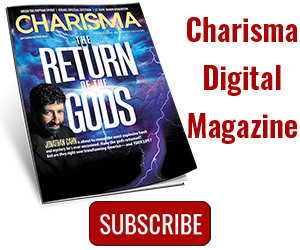
A week ago today we launched the biggest project of our company's history: the release of the Modern English Version. Several years in the making, we are excited that initial response is about 50 percent higher than we anticipated. It's still early and there is a lot to do before a new translation is widely accepted, but we give God the glory and we are very grateful.
This also had meaning to me because I've known for a number of years from researching my family history that I am a descendant of John Rogers the Martyr, who was burned at the stake in 1555 by Queen Mary I of England. She killed so many Protestants she's often called "Bloody Mary."
History has always fascinated me. I've read countless biographies, taken courses in history, and visited enough museums and historic sites that I can't remember them all. Yet one of the elements of history I find most interesting is the intriguing connection many of us have through our lineage. While I was interested in this obscure lineage, it has taken on new meaning now that I have had the honor of publishing God's Word. And I thought you might be interested in what I found out in my research.
Rogers was written about in Foxe's Book of Martyrs, which tells how William Tyndale led him to Christ and how they worked together to translate the Bible into English. Because of the danger involved in translating the Bible during that time, they used the pseudonym Thomas Matthews. Tyndale finished only the New Testament before he was martyred in 1536. Rogers carried on Tyndale's work and in 1537 published the entire Bible under the name Thomas Matthews Bible—sometimes also called the Tyndale-Matthews Bible.
Several years ago, my wife bought me as a gift a framed copy of an actual page from the Thomas Matthews Bible because she knew of this family connection. At the time, we believed it was only verbal tradition within the family. But in recent years, I've discovered I am indeed a direct descendant of Rogers through my paternal grandmother back 17 generations. Sometimes when visitors admire my framed Bible pages and I tell them this story, I joke that my roots in Christian publishing go back to John Rogers the Martyr!
As a believer, the Bible is inherently important to me. But as a publisher, I've always wanted to publish the Bible. In fact, we've published several study Bibles, including in the 1990s when we released the Holy Spirit Encounter Bible using the New Living Translation. More recently, we published the Spiritual Warfare Bible using the New King James Version. We've also published two Bibles in Spanish—Biblia En Su Presencia and the Spanish version of Joyce Meyer's The Everyday Life Bible.
These were dreams come true for me, yet imagine how excited I am—and humbled—to now be able to publish a brand-new, formal-correspondence translation from the Hebrew and Greek texts called the Modern English Version (MEV). That's why we devoted most of the issue of Charisma and also Ministry Today to the topic of engaging with the Bible and telling the story of how the MEV came into existence. If you missed those issues, you can click here and here to access those articles.
Along with my copy of a page from the Thomas Matthews Bible, my small collection includes framed pages from other historic Bibles such as the Great Bible, the Bishop Bible, the Geneva Bible, the Coverdale Bible and the Tyndale New Testament. Yet the page that typically generates the most interest is from the original 1611 "Authorized Version" that we call the King James Version. That version is so famous that, had the entire 1611 edition of the Bible been intact, it would be far too valuable to sell off page by page. Apparently, some damaged copies (which have less value as an entire Bible) were disassembled and framed as artwork to sell to people like me. Compared to other translation collections, mine is not impressive, and I didn't invest large sums of money in it. But to me, it's priceless.
The King James is perhaps the best-selling book in the history of the English language. Even non-Christians know about it and are aware of the "thees" and "thous" of the Elizabethan-era English. That type of English is so archaic that no one talks like that anymore, and King James English is often hard to understand. Yet there are those who want to keep the King James as it is. They grew up with it, and it's the translation they know. As the running joke goes, these people are such ardent fans of the version that they object to any changes to the historic text by saying, "If it was good enough for the Apostle Paul, it's good enough for me."
Of course, that's ridiculous. The entire Bible as we know it wasn't "canonized" by the church until 367 at the very earliest (when Athanasius' letter to the Egyptian churches included the New Testament canon as it is today). In addition, the New Testament was written in Koine Greek and not translated into English until centuries later.
When James became king of England in 1603, several popular versions of English Bibles existed, including the Thomas Matthews Bible. The Anglican Church preferred the Bishop's Bible. The Puritans (the same group that a few years later left England for the Massachusetts Bay Colony) preferred the Geneva Bible. King James I, trying to please both groups, got them to sit down and work together on a brand new "authorized" version.
If you read the 1611 version, you'll notice it is vastly different from the King James Version we use today. Not only are there thees and thous, but also an s looked a lot like an f, so Psalms looks like Pfalmes. In addition, words such as rejoicing were spelled reioycing (in that time, j and i were close and inter-related in spelling).
The King James Version has been updated several times over the years, mainly with modern spellings and new typefaces. Then in the early 1980s, Thomas Nelson published an updated version called the New King James Version, which tried to update the King James into modern English.
Nearly a decade ago, a group of translators felt the updating of the New King James left something to be desired. They wanted a modern version that was more easily understood and, in particular, could be given to soldiers by their military chaplains. An impressive group of 47 academics (the same number King James assembled) using the same Greek and Hebrew texts those translators used determined to do an updated version of the famous translation. When we first learned of the translation, it was informally called the KJV 2011 version. That has been changed to the Modern English Version.
Whether you barely open a Bible or can't get enough of God's Word, the topic of Bible engagement—or our culture's lack of it (including among Christians)—is a crucial issue at this important juncture in history. I also hope you will take time to learn more about the Modern English Version, and how its release comes at a critical time.
We believe it was a miraculous series of divine coincidences that brought us this translation. We certainly don't take that for granted and are honored to be used in such a way. In fact, because it's making God's Word accessible to more people, I consider this is the most important project I've ever done or ever will do!
Steve Strang is the founder and publisher of Charisma. Follow him on Twitter @sstrang or Facebook (stephenestrang).
Steve Strang is the founder of Charisma Media and president of Christian Life Missions. He is also the author of the best-seller God and Donald Trump. Follow him on Twitter and Facebook. Click here to subscribe to the Strang Report podcast, and here to sign up for the Strang Report newsletter.
To contact us or to submit an article, click here.
Get Charisma's best content delivered right to your inbox! Never miss a big news story again. Click here to subscribe to the Charisma News newsletter.





